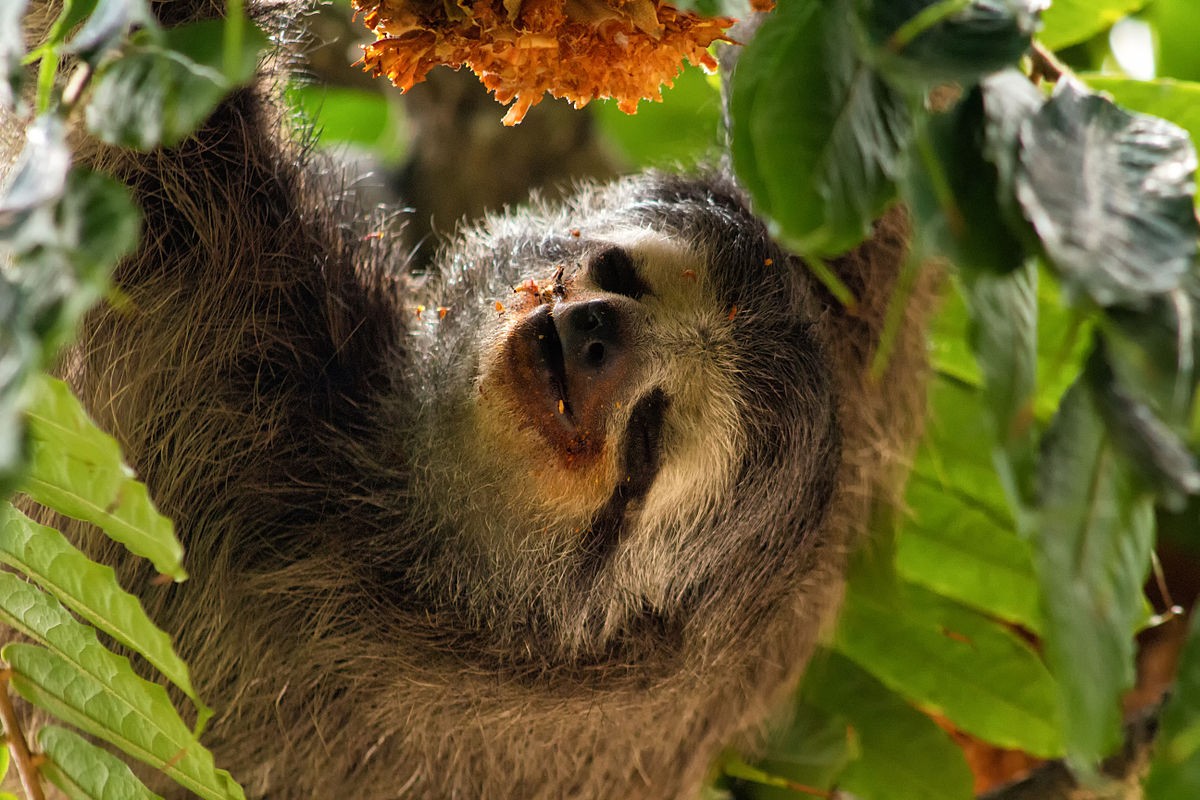Pale-throated sloth
A species of Three-toed sloth, Also known as Three-toed sloth Scientific name : Bradypus tridactylus Genus : Three-toed sloth
Pale-throated sloth, A species of Three-toed sloth
Also known as:
Three-toed sloth
Scientific name: Bradypus tridactylus
Genus: Three-toed sloth
Content
Description General Info
 Photo By Fernando Flores , used under CC-BY-SA-2.0 /Cropped and compressed from original
Photo By Fernando Flores , used under CC-BY-SA-2.0 /Cropped and compressed from original Description
Pale-throated sloths have a rounded head with a blunt nose and small external ears. The limbs are long and weak, with the arms being nearly twice the length of the hindlimbs. The hands and feet each have three digits, armed with long, arched claws, with the middle claw being the largest and most powerful. Males are 45 to 55 centimetres (18 to 22 in) in head-body length, with a short, 4 to 6 centimetres (1.6 to 2.4 in), tail, and weigh from 3.2 to 6 kilograms (7.1 to 13.2 lb). However, the females are noticeably larger, being from 50 to 75 centimetres (20 to 30 in) in length, and weighing 3.8 to 6.5 kilograms (8.4 to 14.3 lb). The body is covered with coarse guard hairs up to 10 centimetres (3.9 in) long, with a finer undercoat. Green algae live mutualistically between the microscopic scales on the surface of the guard hairs, giving the sloth a somewhat greenish appearance that serves as camouflage. Adults are blackish-grey over most of the body, with darker patches distributed over the backs, shoulders, and hips. Males have a bright yellow or orange patch on the back, divided by a central black stripe. Pale-throated sloths are difficult to distinguish from the closely related brown-throated sloth, but, as their name implies, have a pale yellow patch on the throat. The eyes are large and forward facing for binocular vision, with round pupils. Unusually, they appear to lack any cone cells in the retina, suggesting that the sloth is unable to see color. Despite its apparently small ears, the pale-throated sloth has excellent hearing; it has also been reported to have a good sense of smell. 
General Info
Lifespan
30-40 years
Diet
As a specialist herbivore, pale-throated sloth primarily feeds on the leaves of Cecropia trees. Apart from leaves, pale-throated sloth also ingests fruit, soft twigs, and buds, using its slow metabolism to derive energy and nutrients.
Appearance
Pale-throated sloth is a medium-sized mammal characterized by its round body, pendulous limbs, and long, curved claws. It has a small, short-tailed and flat head, while its fur is thick and coarse, often with greenish hue due to algae. This species boasts a unique pattern: three distinct bands wrap its torso. Regardless of age or gender, they share similar appearances, offering no significant variation.
Behavior
Pale-throated sloth demonstrate a largely solitary existence, characterized by sedentary and arboreal habits. Known for its extreme slowness, its behavior helps with energy conservation and camouflage, aiding survival against predators. Having no defined territories, pale-throated sloth avoid conflict and instead rely on their cryptic lifestyle for protection.
Population
Decreasing
Scientific Classification
Phylum
Chordates Class
Mammals Order
Anteaters and sloths Family
Three-toed sloths Genus
Three-toed sloth Species
Pale-throated sloth